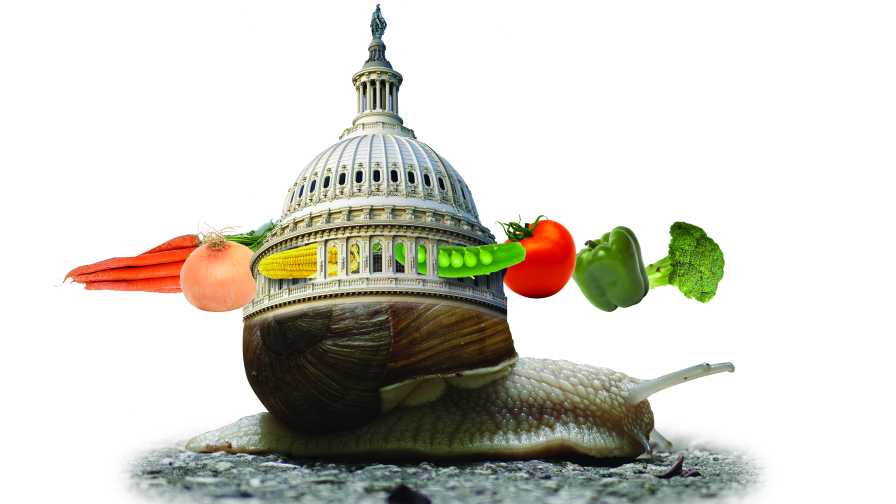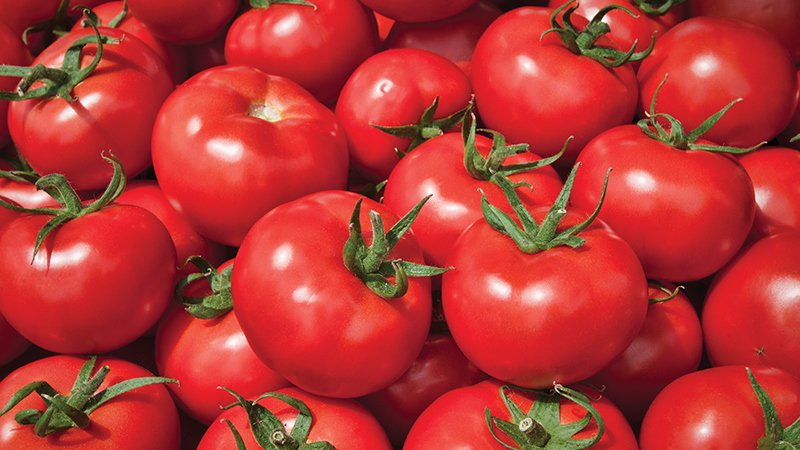Food Safety Modernization Act Creeping Forward
 To get an idea of the glacial speed at which the federal government sometimes acts, one needs to look no further than the Food Safety Modernization Act (FSMA), which was passed into law in January 2011. But, in defense of the slow pace of the rollout of the law, it is the largest overhaul in food safety regulations in more than 70 years, and some delays were forced as agricultural stakeholders fought for more practical, flexible, and effective interpretations of the law.
To get an idea of the glacial speed at which the federal government sometimes acts, one needs to look no further than the Food Safety Modernization Act (FSMA), which was passed into law in January 2011. But, in defense of the slow pace of the rollout of the law, it is the largest overhaul in food safety regulations in more than 70 years, and some delays were forced as agricultural stakeholders fought for more practical, flexible, and effective interpretations of the law.
The Trump Effect
With the Final Produce Safety Rule completed and compliance dates in place, President Donald Trump’s freeze on new regulations raised questions about what impacts it might have on the FSMA rollout. The freeze noted that pending federal regulations must now get a second look and be approved before enforcement.
Some clarity to where FSMA stands came in the form of a “Covington Alert.” The alerts are issued by DC-based law firm Covington, which specializes in government regulations. The memo provided some insights on how food safety rules might be impacted by the changing of administrations.
In part, the memo read: “A regulatory freeze upon a change in administration is not uncommon; President Obama issued a nearly identical memorandum in 2009. While this is one step toward the Trump Administration managing new and pending federal regulation, the regulatory freeze is limited in scope. Specifically, it does not direct federal agencies to stop working on new regulations — it does not impact comment periods for dockets that are currently open, nor does it prevent agencies from considering comments already submitted. It also does not impact regulations that have already taken effect.
“From a food regulatory perspective, this means that the regulatory freeze will not impact the regulations FDA issued under the Food Safety Modernization Act in 2015 and 2016, nor will it impact the Nutrition Facts Label final rule, as the effective date for all of those regulations has already passed. The regulatory freeze will only impact any regulations that FDA or USDA plan to send to the Office of the Federal Register in the next few months (including any currently under review at the Office of Information and Regulatory Affairs), as well as any regulations that were recently published but not yet effective, unless those regulations are subject to statutory or judicial deadlines.”
So, in effect, Trump’s public announcements on freezing regulations will have no real impact on FSMA’s Produce Safety Rule, but may in fact affect rules still unpublished. In addition, future funding of the agencies directed to regulate FSMA could potentially impact how the law is enforced.

One of the biggest snags in the Produce Safety Rule is surface water testing requirements for growers.
Working Out Kinks
With a law regulatory overhaul so massive, there are many details to be sorted out. As the timer counts down toward compliance, there is a lot of work yet to be done.
“What remains a concern to us is there have only been seven rules published so far,” says Dr. Martha Roberts, a Food Safety Consultant with Roberts Associates. “As FDA originally said, they were to have published 18 rules and about 150 reports and documents related to FSMA by now. There is so much going on out there that it is almost beyond a grower’s or stakeholder’s capacity to know where we are in the process and whether there are new rules that need to be commented upon.”
Roberts says there are two major concerns the agricultural industry has pointed to — regulation of foreign food producers and water-testing requirements.
“The greatest concern most people mention, and frankly one we have the least control over, is how we treat imported produce,” Roberts says.
“The Produce Safety Rule by law is supposed to require the same food safety practices and inspection for both foreign and domestic growers. The problem is there really is no mechanism to do this despite the rule.”
Roberts added that it is hard to imagine a port inspector would be looking to determine every individual grower of tomatoes from Mexico or Guatemala would be following all the rules required by the law and have records to back it up.
“This is going to be extremely difficult to do,” she says. “But, I commend our Commissioner of Agriculture Adam Putnam for expressing over and over again that rules and verification have to be the same for both sides — foreign and domestic. That’s what the law stipulates.”
Another major hang-up with the Produce Safety Rule is water quality and testing provisions. Roberts has been working closely with the National Association of State Departments of Agriculture (NASDA) to come to up with more practical and common sense requirements on water safety.
One challenge surrounds the requirement to have 20 historic background samples of water being pulled from surface sources like a pond or a canal, if this water will touch the fruit or vegetable in the process of irrigation.
“For example, think of a farm in South Florida that is pulling water from a canal 100 yards long,” she says. “The grower might be dropping the intake hose in a different place every day. It would be impossible for that grower to pull 20 samples for every place that hose is dropped. And, besides, the water in that canal is totally controlled by the water management district.”
Another problem area being studied deals with the water test itself. As the rule is published, it stipulates the FDA will require EPA water testing method 1603. If another method is used, it must be judged to be equivalent in accuracy, precision, and sensitivity.
“The problem with EPA method 1603 is the state water-testing labs don’t run it, nor do private labs, or growers who have their own water-testing labs,” Roberts says. “We are actively working with FDA to see how we could get some other testing methods allowed under the rule. I have been working closely with scientists and government labs across the country to compile a list of all the testing methods being used. We are very hopeful FDA will have a mechanism to judge whether these testing methods that already are actually in use can be used.”
Educate Before and While You Regulate
Roberts did point out there is good news in the philosophy in which FDA is approaching enforcement of produce food safety under FSMA.
“The FDA has said they are going to ‘educate before they regulate,’” she says. “And, then they made an even better comment that they are going to ‘educate before and while they regulate.’ This is so very important because fruit and vegetable farmers have never been regulated by the government on this scale and in this manner.”
There have been a multitude of educational training sessions presented to help growers get up to speed on the requirement of FSMA. FDA, in conjunction with NASDA and Extension, has launched an on-farm readiness review to help growers gauge how prepared they really are for the new rules and regulations.
A number of pilot projects are being conducted to develop the on-farm readiness tool.
“We conducted a pilot in Florida in late January,” Roberts says. “The on-farm evaluation tool is being revised now with the Extension/FDA/NASDA team, and after refinement, we will have another pilot application in North Carolina. We had some great feedback and suggestions from those farms we visited in Florida. The intent of all this is to have a tool that is helpful to the growers.”
According to Roberts, the on-farm evaluation tool should be finalized hopefully by the end of the year.
Another bit of good news for specialty crop growers is many of them have been doing most of these practices for years now due to the requirements of their buyers. Roberts says — in this sense — the industry has been ahead of the government in terms of regulations.
“If you look at Florida tomato growers, for instance, they developed their good agricultural food safety practices in 2007, and the state formally adopted them in 2008,” she says. “Under FSMA, they may have to tweak a few recordkeeping things here and there, but they have pretty much been doing all of these things already.”
Going forward, Roberts says, growers and the industry have to hang in there. “They need to fight for common-sense implementation of FSMA that promotes safety for the public and also works for business.”










